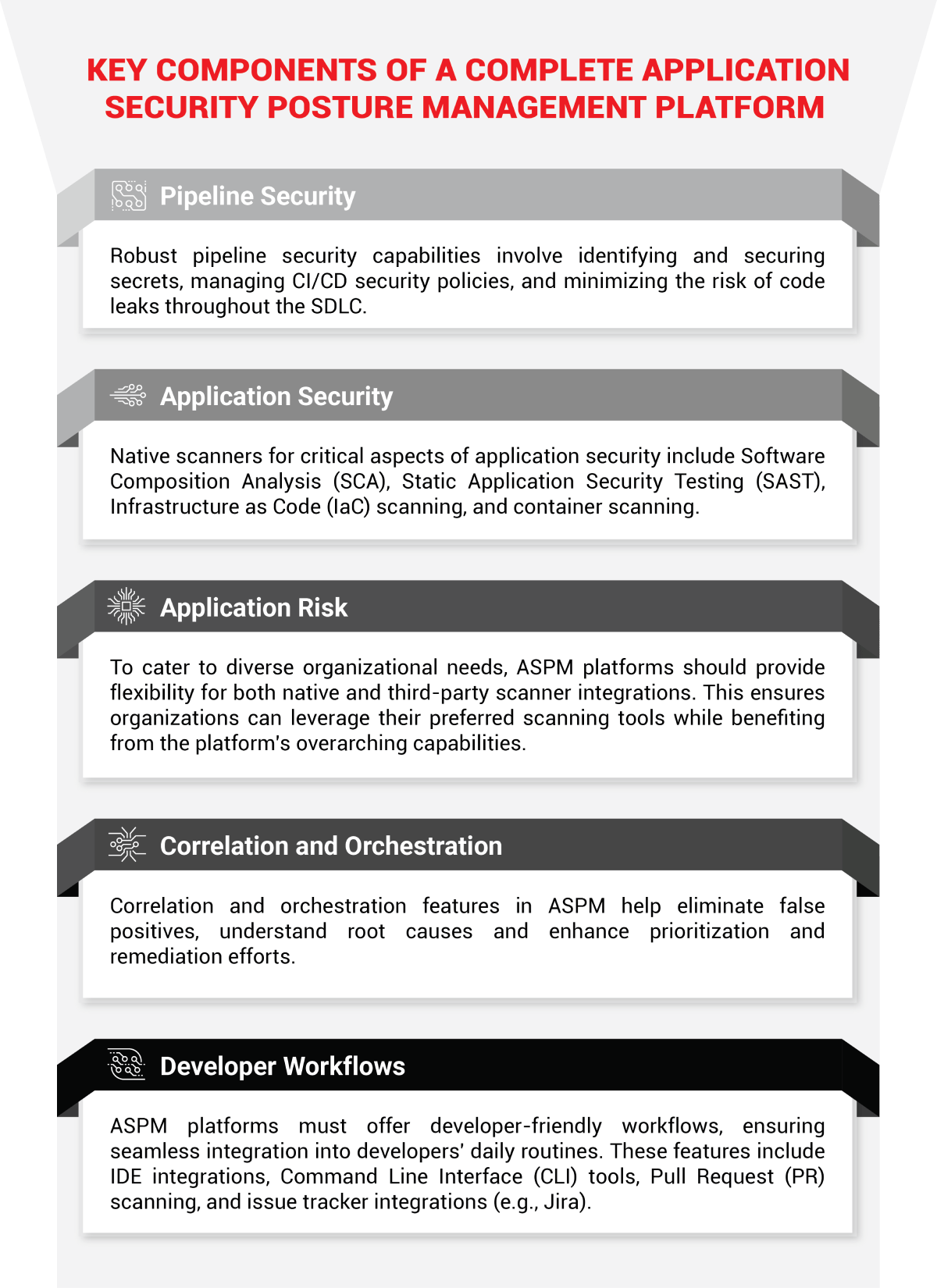As the corporate application portfolio constantly evolves, it becomes vulnerable to significant security challenges. Moreover, the emergence of low-cod, no-code, and cloud computing technology that enables employees to design and implement applications without IT oversight is complicating the application security landscape.
Application security encompasses the measures taken during the application design and development lifecycle. It comprises security considerations at the application level to prevent code or data from being stolen and protect apps once they are deployed.
Application security posture management (ASPM) is a comprehensive platform designed to continuously assess, manage, and enhance the security of contemporary applications, ultimately strengthening an organization’s overall risk posture.
Understanding Application Security Posture Management
Application Security Posture Management continually evaluates, manages, and enhances the security of contemporary applications to strengthen an organization’s overall risk posture. ASPM consolidates findings from various sources like application security testing (AST) tools and repository data by offering visibility, detection, correlation, prioritization, and remediation of security vulnerabilities and defects throughout the software development lifecycle (SDLC).
Key Features of Application Security Posture Management
- Code to Cloud Visibility: ASPM offers a comprehensive view of the SDLC, code, tooling, processes, and data from operational environments. This visibility extends to cloud platforms, containers, and physical infrastructure, allowing organizations to monitor vulnerabilities, tool misconfigurations, and potential weaknesses continuously.
- Vulnerability Scanning: Application Application security posture management tools conduct regular scans of applications using a wide array of native and third-party testing tools. These include secrets scanning, Software Composition Analysis (SCA), Static Application Security Testing (SAST), and other techniques to identify known security issues.
- Prioritization and Risk Management: Organizations leverage ASPM to prioritize and manage security risks associated with their applications. This capability empowers security teams to make informed decisions based on the potential impact of vulnerabilities on the organization.
- Remediation and Mitigation: Application security posture management provides actionable insights for remediating or mitigating identified vulnerabilities. This may involve suggesting specific code changes, configuration adjustments, or the application of security patches.
- Compliance Reporting: Application security posture management solutions assist organizations in adhering to industry standards and regulations such as SSDF, SOC 2, and ISO 27001. By providing tools for compliance reporting, ASPM contributes to maintaining security policies and standards.
- Reporting and Analytics: ASPM tools generate detailed reports and analytics, offering organizations insights into the security posture of their applications over time. These reports are valuable for tracking progress, demonstrating compliance, and making data-driven decisions.
Importance of Application Security Posture Management in Modern Cybersecurity
In the rapidly evolving cybersecurity landscape, Application security posture management plays a pivotal role in safeguarding organizations against cyber threats that specifically target the application layer.
- Proactive Security Management: ASPM solutions empower organizations to proactively manage the security of their applications. By identifying vulnerabilities early in the SDLC, security teams can address issues before they escalate.
- Reduced Attack Surface: ASPM aids in minimizing the attack surface by identifying and addressing vulnerabilities across the entire software development lifecycle. This proactive approach reduces the opportunities for attackers to exploit weaknesses in the application.
- Decreased Mean Time to Remediation (MTTR): The continuous monitoring and prioritization capabilities of ASPM contribute to reducing the Mean Time to Remediation. By quickly addressing critical vulnerabilities, organizations enhance their ability to respond to security incidents effectively.
- Enhanced Security Posture: ASPM goes beyond traditional security measures by offering a holistic view of an organization’s security posture. This comprehensive understanding allows organizations to make informed decisions and continuously improve their security stance.
- Focus on Application Layer Security: Applications are often the primary targets of cyberattacks. ASPM’s focus on the application layer is crucial for identifying and mitigating vulnerabilities that could be exploited to compromise sensitive data and disrupt business operations.
Additional Benefits of Application Security Posture Management
- Tool Consolidation: ASPM allows organizations to replace existing Application Security Testing (AST) tools with a unified solution. This not only saves costs on licensing fees but also streamlines monitoring efforts by consolidating security tools into a single platform.
- Reducing Noise: ASPM consolidates and correlates security alerts, simplifying the identification of critical threats. By reducing alert fatigue, organizations can focus on business-impact-driven responses to security incidents.
- Increasing Security-Developer Collaboration: ASPM facilitates collaboration between security and development teams, aligning with the principles of DevOps. Seamless integrations and developer-friendly workflows enable secure coding practices without impeding innovation.

Application Security Posture Management (ASPM) stands at the forefront of modern cybersecurity, providing organizations with the tools and insights needed to secure their applications comprehensively. By continuously assessing, managing, and enhancing the security of applications, ASPM contributes to reducing cyber risks, improving overall security postures, and fostering collaboration between security and development teams. As applications remain a prime target for cyber threats, investing in ASPM is crucial for organizations seeking to stay ahead in the ever-changing landscape of cybersecurity.
